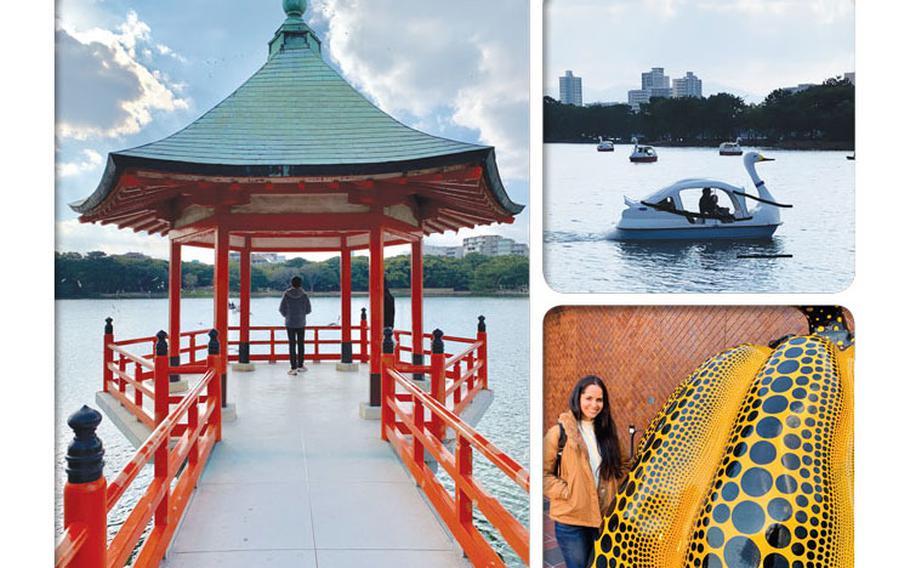Travel
More than a walk in the park at Fukuoka’s Ohori Koen
Commander, Submarine Group Seven December 16, 2020

Photos by Yashira M. Rodríguez Sierra ()
Editor’s Note: Today, we are living in uncertain times, so please plan ahead if, and when, you decide to travel. Follow safety guidelines set by your base and always remember to practice proper hand-washing and social distancing.
Fukuoka is the largest city of Kyushu, Japan’s third-largest island. I was determined to explore it a little more, so I made the nearly three-hour train ride to have a little adventure.
The city has many parks and during my pre-trip research, I discovered Ohori Park and immediately added it to my list. The train from Fukuoka Airport Station to Ohori Koen took me straight to the entrance of the park. This park is huge and offers many activities that are sure to please all members of your family.
First opened to the public in 1929, Ohori Park’s name means moat in Japanese, which signals the area’s previous life as the moat for Fukuoka Castle. This place has something special and invites the feeling of tranquility and happiness for visitors. While the children played in the two playground areas, others contemplated the wonderful views this park has towards the large lake and the four small islands that are in the center of the park. These islands are connected to land by four stone bridges. On the island called Yanagishima, you will find the wooden Ukimi Pavilion. This pavilion brings you closer to the lake. This is one of the most recognized places in the park and a favorite spot for photos.
There were people jogging, walking dogs, feeding birds and enjoying picnic lunches. And, if you’re feeling adventurous, you can ride on swan-shaped boats in the lake for a small fee.
Ohori Park is also a great place to learn about horticulture as it is brimming with colorful flowers and majestic trees like ume, gingko, magnolia, oak and cherry trees, cared for by volunteers. If you snap a photo, you can easily scan the park QR code and will be able to identify the flower or plant, which is a great educational tool for kids and adults.
Fukuoka Art Museum is also accessible through Ohori Park. Here, visitors can take in permanent collections displaying an impressive sumo wrestler statue and a Yayoi Kusama pumpkin sculpture. The building which houses the art was designed by Japanese architect Mayekawa Kunio and was opened to the public in 1979. Don’t forget to check out the original model on permanent display as well as the on-site souvenir shop and restaurant.
After the museum, I made a stop at the Japanese Garden designed by Kinsaku Nakane. To enter this part of Ohori Park, it will cost you 200 yen. It’s a small fee but worth it to view the small-scale waterfalls and beautiful teahouse as well as to walk, meditate and take more pictures.
When I say, Ohori Park is huge, I mean it! Are you into birdwatching? Ohori Park has something called the “Wild Birds Forest” where you can observe wild birds up close. Into theater and history? There is a Noh theater in the park as well.
There is plenty of parking, restaurants, vending machines and more available to visitors, so make sure to add Ohori Koen to your visit next time you’re in Fukuoka. I couldn’t see everything in one day, so I hope to go back and enjoy this wonderful and peaceful park again soon.
YNSN Yashira M. Rodriguez Sierra is originally from Caguas, Puerto Rico. She is assigned to Sasebo Naval Base. Rodriguez Sierra enjoys nature and moving to Japan was a dream come true. She volunteers at a local orphanage and before joining the Navy she was an artisan and journalist.
More information
Ohori Park: https://www.ohorikouen.jp/en/ Ohori Gardening Club: https://miyuri-hana.jp/ohoripark-gc/a/ Ohori Japanese Garden: https://www.ohoriteien.jp/en/ Fukuoka Art Museum: https://www.fukuoka-art-museum.jp/en/